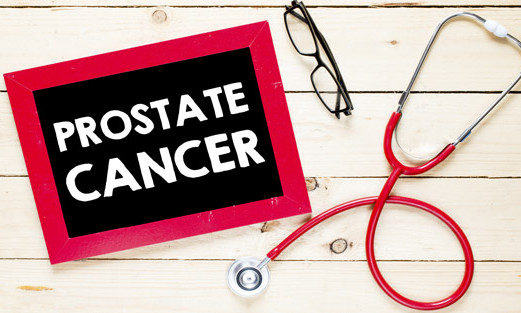Pfizer vs J&J– Researchers are duking it out for the championship title in nonmetastatic prostate cancer
February 7, 2018
Source: Endpts
 688
688

Pfizer and J&J have come down to the wire with pivotal data on nonmetastatic prostate cancer. And there are billions of dollars in revenue on the line here.
Both companies posted their abstracts being reviewed at ASCO’s Genitourinary Cancers Symposium Monday evening. And while scientists frown on comparing data from two different studies, you can bet that analysts will be lining up the results side-by-side to see who will come out ahead.
Mace Rothenberg, Pfizer
On the one hand you have Pfizer, which posted an impressive 21.9-month improvement in metastasis-free survival for prostate cancer — 36.6 months vs 14.7 months [P < .0001] — for Xtandi as well as time to first use of new antineoplastic therapy (39.6 mo vs 17.7 mo [P < .0001]) and time to PSA progression (37.2 mo vs 3.9 mo).
On the other is J&J, which is fighting hard to retain patent protection on Zytiga, which along with Xtandi has changed the standard of care in prostate cancer. Studying a next-gen drug dubbed apalutamide, their pivotal trial hit a median MFS rate of 40.5 months vs 16.2 months in the placebo group. “Secondary endpoints (TTM, PFS, and SymProg) were all significantly improved.”
That’s a 24.3-month improvement in MFS, which was 2.4 months better than its rival therapy at Pfizer.
But is that big enough to make a sizable difference?
You can expect to see a lot of commentary on this topic in the coming days, especially with J&J’s Zytiga franchise hanging in the balance in a federal courthouse. But don’t expect Pfizer to back away because the experimental contender got the edge on MFS.
“When we saw this (data)” on Xtandi, says Mace Rothenberg, the chief development officer for Pfizer’s oncology group, “we were surprised and extraordinarily pleased. This is not a result in the gray area.”
“Out of my 30 years experience,” adds Rothenberg, “the hazard ratio for the primary and secondary endpoints are the best I’ve ever had a hand in.”
Investigators have been particularly interested in patients with rapidly rising PSA scores, a high-risk group that may be particularly in need of a therapy like this. There’s also been more research on the link between metastasis-free survival and overall survival, which they’ve been paying rapt attention to. And with a trend toward a survival benefit in the study at this stage, Rothenberg thinks that the OS results will line up nicely when the data mature.
Mark Wildgust, J&J
Of course, J&J thinks exactly the same thing about apalutamide.
“The results are incredibly compelling,” says Mark Wildgust, vice president of medical affairs for J&J, who worked on this study with his oncology team and gave me a preview of the data. Not only is the improvement in MFS dramatically clear, it’s also importantly that patients’ quality of life scores demonstrated that the improvement didn’t come with a significant cost of adverse events.
Wildgust also cautions that J&J will be able to reveal more about the secondary endpoints in their study later this week, which he believes will add to the product profile that they’re building.
J&J shouldn’t have long to wait before the FDA signals whether it is buying into the next-gen prostate cancer therapy, with a PDUFA date set for April, just two months away.
Evaluate Pharma has pegged 2022 sales at $1.6 billion for apalutamide, flagging some of the zeal that analysts have for this drug.
The pharma giant landed this drug in their $1 billion acquisition of Aragon close to 5 years ago. And top execs have backed it up, highlighting blockbuster expectations.
It’s a sizable market. Rothenberg says that there are 20,000 men diagnosed with non-metastatic prostate cancer each year in the US.
“We feel very confident in the results we’ve generated and the experience we’ve had,” adds Rothenberg, who is also quick to caution against direct comparisons like this. All of these studies are likely to include subtle nuances that could affect aggregate outcomes. At the same time, he’s ready to spell out why he thinks Xtandi is the superior drug.
Xtandi “has been on the market 6 years, 185,000 men have received Xtandi, which has established a very strong and large foundation of evidence” likely to make practitioners feel comfortable about using their drug in this category, he says.
It’s in the hands of regulators now, but given the way the FDA has viewed pivotal data and likes to back new choices for practitioners, both of these drugs look like strong contenders for an approval later in the year. And that would leave the two giants continuing to duke it out for market share — to the benefit of all the patients fighting prostate cancer.
Ben Davies, an associate professor of urology at the University of Pittsburgh, had this to say on Twitter:
Looks like minimal differences. I’ll go with approval for apalutimide. Xtandi will also get a new indication. Advertising dollars will win the day? Or deals with PBMs (while they are still here).
By Ddu
Read more on
- Disposable Medical Products that Keep Your Medical Facility Clean and Sterile March 31, 2022
- 10 Triumphant Drug Launches Of The Decade August 26, 2021
- Ultrasonic Nebulizer Market Views September 6, 2018
- 4 Best-Selling Digital Thermometers on Drugdu.com in 2018 September 5, 2018
- Don’t Miss These Tips before Your Cardiac Monitor Purchase September 5, 2018
your submission has already been received.
OK
Subscribe
Please enter a valid Email address!
Submit
The most relevant industry news & insight will be sent to you every two weeks.



